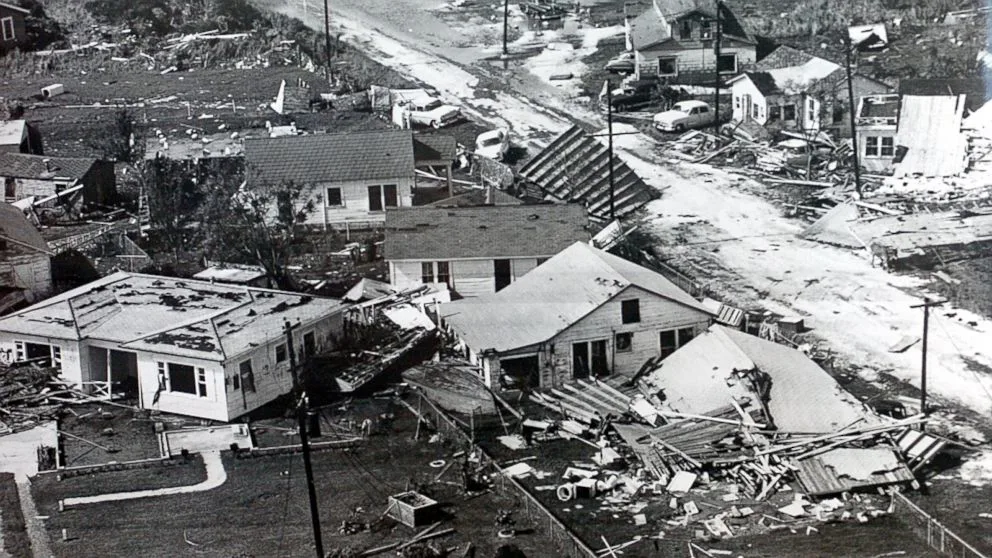
August 17, 1969 - Cat-5 Camille Carves Up the Coast
On Aug. 17, 1969, Camille made landfall in the United States as a Category 5 hurricane, one of only four storms of that power to strike the U.S. mainland.
Hurricane Camille was the second-most intense hurricane to hit the U.S. and remains one of only four Category 5 hurricanes to strike the U.S. mainland. The combination of winds, surges and rainfalls from the storm resulted in at least 259 deaths and caused nearly $1.4 billion in damages at the time, equivalent to $9.9 billion current day.
Late Saturday night, on Aug. 16, 1969, Hurricane Camille roared past the mouth of the Mississippi River as it sped toward an all-out assault on the Mississippi Gulf Coast.
The hurricane formed in the Cayman Islands on Aug. 14 and continued to intensify rapidly before making landfall on Aug. 17, near Waveland, Miss., according to the National Hurricane Center.

Hurricane Camille damage. Photo: NOAA.
Camille caused tremendous damage in its wake, and produced a peak official storm surge of 24 feet (7.3 metres). The hurricane flattened nearly everything along the Mississippi coast, resulting in additional flooding and deaths inland while crossing the Appalachian Mountains of Virginia.
Click here to see more episodes of This Day in Weather History

Damage from Hurricane Camille. Photo: NOAA.
The heaviest rains along the Gulf Coast were about 250 mm. However, as Camille passed over the Virginias, it produced a burst of rains with local totals of up to 680 mm. Most of this rain occurred in 3 to 5 hours and caused catastrophic flooding.
On today’s podcast, Chris Mei explains why Camille intensified so quickly into a Category 5 hurricane and the problems that were encountered when trying to come up with a name for the storm.
“This Day In Weather History” is a daily podcast by The Weather Network that features unique and informative stories from host Chris Mei. Click here to listen and subscribe!











